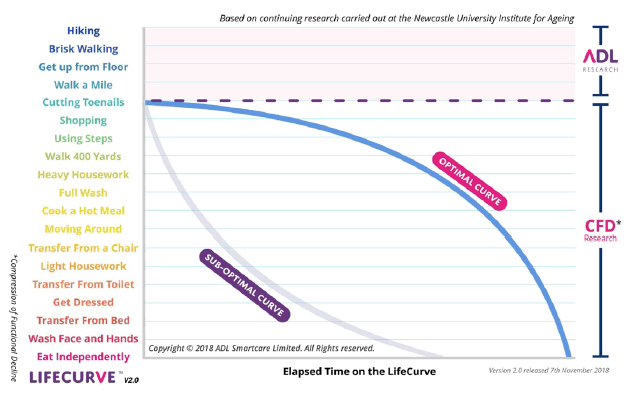Allied health professions LifecurveTM survey: report on respondents with communication support needs
Provisional analysis of findings from a major survey of clients of allied health professionals (AHPs), focused on survey respondents who reported having communication support needs.
2. Survey Background
AHPs comprise a range of professional groups, including Occupational Therapists, Physiotherapists and Speech and Language Therapists (see Appendix 1 for more details). They support people of all ages, providing preventative interventions in such areas as supported self-management, diagnostic, therapeutic, rehabilitation and enablement services (Scottish Government, 2018b).
The Active and Independent Living Programme (AILP) is a Scottish Government programme led by the Chief Health Professions Officer, within the Chief Nursing Officer Directorate. It is intended to drive significant culture change in how people can access and receive AHP support for self-management, prevention, early intervention, rehabilitation and enablement services. AILP's vision is that "Allied Health Professionals will work in partnership with the people of Scotland to enable them to live healthy, active and independent lives by supporting personal outcomes for health and wellbeing" (Scottish Government, 2017, p. 14).
In 2017, AILP requested all AHPs in Scotland to participate, on an agreed date, in 'The AHP LifeCurveTM Survey'. The purpose of the survey was to develop a better understanding of where in people's lives the AHP workforce is intervening. AHPs were asked to identify at least two clients typical of those using their service, and to invite them to complete the survey questionnaire (AILP, 2017a: see Appendix 2). This questionnaire sought to gather information on the range of clients being seen by AHPs, and to map their functional abilities against the ADL LifeCurveTM tool which was developed by ADL Research and Newcastle University's Institute for Ageing to map age-related functional decline. The ADL LifeCurveTM is 'a model of "Compression of Functional Decline" (CFD) based on evidence in the literature that there is a hierarchical order to the loss of functional ability (AILP, 2017b). Figure 1 below shows the LifeCurveTM model, including 'pre-curve' items (hiking, brisk walking, getting up from the floor and walking a mile) and then the fifteen LifeCurveTM items. People are considered to enter the LifeCurveTM when they begin to have difficulty independently completing the first item on the LifeCurveTM, 'Cutting Toenails'.

Figure 1: The University of Newcastle LifeCurveTM Model (ADL Smartcare, 2018)
The LifeCurveTM does not provide timeframes of decline or impairment, although the 'AHP LifeCurveTM Survey' identified key points where AHPs are more likely to intervene. These are pre-curve (point 0), at the Heavy Housework point (point 5), or 'late-curve' between points 10 and 13 (10. Light housework, 11. Getting on/off toilet, 12. Getting dressed, and 13. Getting up/down from bed).
The survey data is intended to provide evidence of the need for earlier, preventative interventions by AHPs, to support people to improve and maintain skills and reduce functional dependence.
Contact
Email: debbie.sagar@gov.scot
There is a problem
Thanks for your feedback